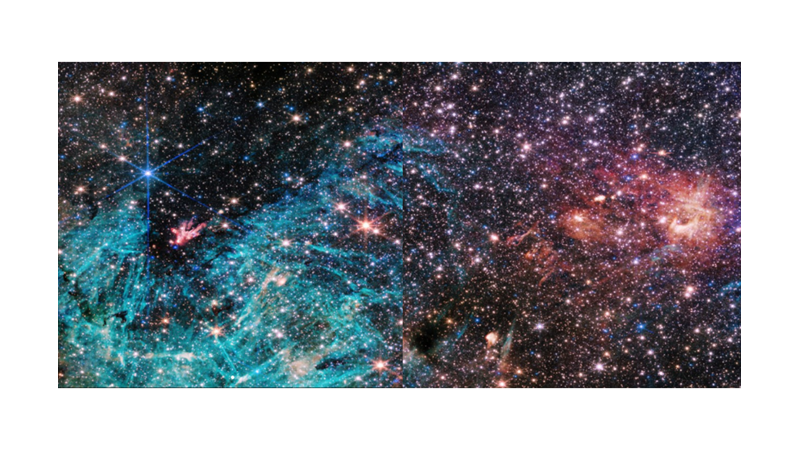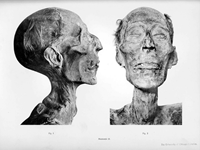Webb took a look at Sagittarius C, a star formation region in the heart of our galaxy, near the supermassive black hole at its core. Stars typically form in clouds of dust and gas - which are abundant near the center of the galaxy - so why don't we see lots of stars being born there? Webb's data suggests that the strong magnetic fields surrounding our central black hole may be playing a role in suppressing star formation.
The first two slides are Webb's infrared image of a small region of a much larger field (slides three and four), shown with data from the ground-based radio telescope “MeerKAT”. The MeerKAT image covers 1,000 light years, while the Webb image covers only 44 light years. In the center of the MeerKAT image, the region surrounding the Milky Way's supermassive black hole glows. Massive vertical filamentary structures echo those captured on a smaller scale by Webb in the blue-green hydrogen cloud of Sagittarius C. Like a super-long-exposure photograph, MeerKAT captures the dynamic nature of the Milky Way's chaotic core, showing the bubble-like remnants of supernovae exploding over millennia.
Image description:
(slides 3-4) Processed data collected by the MeerKAT radio telescope shows the plane of the Milky Way galaxy, with a graphic bump on the right side highlighting a much smaller region captured by near-infrared light observations from the James Webb Space Telescope. The MeerKAT image is in blue, cyan and yellow, with a very bright white-yellow center that shows the location of the Milky Way's supermassive black hole. Painted bubbles of various sizes, clouds and vertical brushstroke-like lines make up the radio image. In the Webb inset (slides 1-2), stars and gas clouds are shown in red, and there is a bright cyan-colored curved cloud with many flat, needle-like features that look more like crystals than clouds.
Kredi: NASA, ESA, CSA, STScI, SARAO, Samuel Crowe (UVA), John Bally (CU), Ruben Fedriani (IAA-CSIC), Ian Heywood (Oxford)


 Nielawore
Nielawore










Yorum yazmak için lütfen giriş yapınız